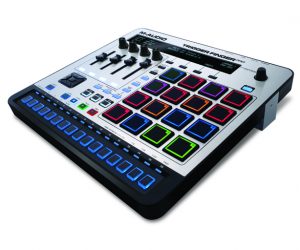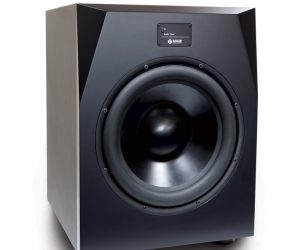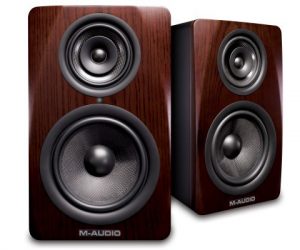
PC Audio 128
Buying a new audio interface can also mean losing an old friend — here’s how to minimise your stress levels.
The first audio interfaces were plug and play ‘soundcards’ that you installed inside your PC, firstly in ISA format, then PCI, and most recently PCIe. Early models were primarily intended to accompany games playing, and didn’t really offer audio quality good enough for commercial recordings. I can still remember the first soundcards I reviewed that tipped the balance for me over to ‘professional’ audio quality; the 20-bit Echo Gina, Darla and Layla models, released in 1997 for Windows 95/98. As the available options mushroomed, I/O began to expand into rack-mounting cases, and nowadays the format choices can seem rather more complicated.
I still see a lot of people asking for advice on upgrading PC audio interfaces, and they seem to fall into two main categories. The first comprises musicians reluctantly abandoning their current interface because they’ve either upgraded to Windows 10 only to find it doesn’t have W10 drivers, or upgraded their PC only to find it doesn’t have the right ports to connect it and there isn’t a suitable adaptor card. I suspect most of us have been in a similar situation at least once or twice by now. A few dedicated people go to great lengths contorting existing legacy drivers so they work on newer versions of Windows. Even manually hacking drivers to the point of having no idea whether they are running successfully on the current operating system. Inevitably we all have to abandon ship sooner or later. This is the nature of the modern computer beast.
NARROWING DOWN THE OPTIONS
If you have to replace a favourite PC audio interface then your research should be fairly standard: what do you want to record (determining the combination of mic, instrument, and line inputs you’ll need); what digital extras will help you integrate the proposed new interface with the rest of your gear (perhaps coaxial or optical S/PDIF, ADAT and AES/EBU); and how you’re going to allocate its various analogue outputs (depending on whether you’re producing in stereo, surround sound, or need to patch in hardware rack gear). Along with other options such as MIDI I/O, headphone monitoring and even integral DSP effects, this should narrow down the options considerably. However, a few caveats on format. Don’t ignore the USB format, as it’s still perfectly capable of running quite a few channels with respectable latency, and while Firewire seems to be well on the way out despite its popularity a few years back, don’t be sucked into the mindset that Thunderbolt is the only modern choice. Yes, there are some wonderful interfaces out there, but few actually perform any better because of their Thunderbolt interface.
MORE PLEASE
The second category of musicians wanting to upgrade their interface are driven by concerns of audio quality or features, either wanting a complete replacement that sounds better, adds more features, or fancy expanding/improving their existing one to achieve better recording/playback quality or more simultaneous channels. Once again, don’t be sucked into the mindset that the latest interfaces will always have significantly better-sounding converters. While there have been huge leaps in converter technology over the last couple of decades, most interfaces released during the last four or five years will sound great (even budget ones!). Audio improvements are likely to be incremental rather than radical. You’ll find a similar situation with onboard mic preamps. While budget offerings have improved over the years, quality mic preamps have been readily available at bargain prices for many years now. Yes, if you allocate lots more money for your new interface, it may well sound slightly better, but in many cases spending that amount of money on adding acoustic treatment to your recording environment will probably improve the sounds of your recordings even more.
EXPANDING SIDEWAYS
If you’re still happy with your existing interface and its driver support, yet need more or better audio features, you can instead try the bolt-on approach. For instance, I’m still using a basic PCIe interface I bought way back in 2001, but have subsequently greatly increased its audio playback quality by plugging its S/PDIF output into an upmarket standalone D/A converter (in my case the Lavry DA10). A few years after that I added a high quality stereo mic preamp with built-in A/D converters (the late Audient Mico) that plugs into my soundcard’s S/PDIF input. As and when I finally need to replace my old soundcard, I can still carry on using my standalone converters and preamps. Similarly, if you find yourself running out of analogue inputs, many musicians already own interfaces with ADAT I/O that will let you plug in eight more mic preamp channels. At the budget end of the market, examples include the very affordable Behringer ADA8200, while others such as the Presonus DigiMax DP88 could noticeably improve recording quality, as will Audient’s ASP800 and 880 models, the former even offering versatile ‘retro’ sound-shaping options, such as MOSFET harmonic saturation and a transformer input, to their otherwise clean sound. For many musicians, such expansion options are very enticing, although sometimes it can make more financial sense to replace the entire interface with a new one that already incorporates all the channels/features you are likely to need for the foreseeable future.
DRIVER QUALITY
Finally, while many musicians still seem to think that the mic preamps and converters are the only keys to sonic excellence in an audio interface, for some, low latency performance may prove a more important deciding factor, especially if you’re recording bands and need ‘real-time’ monitoring for their headphone feeds. Many interface manufacturers buy off-the-shelf converter chips that come with pre-written drivers. They have to depend on the chip designers to update them to either cope with new operating systems (this is why so many interfaces fall by the wayside when Windows versions change), or unexpected bugs. Other interface manufacturers take the longer road of designing chips in house and writing the drivers themselves (RME is probably the most famous example), so they are able to update and refine their driver code as part of the regular development and maintenance cycle. If low latency performance is particularly important to you, read the AT reviews to see which ones really cut the mustard!
















RESPONSES